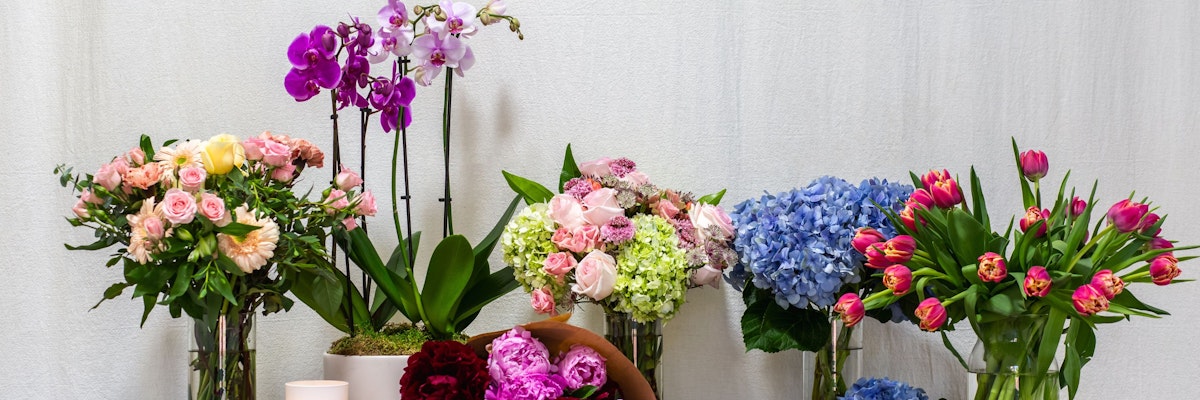10 Reasons to Incorporate Flowers and Plants in Classrooms
Plants have an extraordinary effect on our everyday lives. Their natural beauty, gentle presence, and calming influence transform any space they occupy. Classrooms are no exception. Incorporating flowers and plants into these learning environments can create positive changes for students, teachers, and the overall school atmosphere.
Benefits of Classroom Plants for a Better School Environment
The simple act of adding classroom plants can bring life and vibrancy into an otherwise sterile space, making it more inviting and inspiring.
One of the most recognized benefits of plants is their ability to improve air quality. Plants act as natural filters, removing harmful toxins and releasing oxygen into the air. This is particularly important in classrooms, where students spend hours sitting and focusing. Cleaner air encourages better concentration and reduces feelings of fatigue, which contributes to more effective learning.
Beyond physical health, classroom plants have a significant impact on mental well-being. Their presence helps to lower stress and anxiety levels for both students and teachers. Studies have shown that greener environments promote a sense of calm, paving the way for clearer thinking and better emotional regulation. For students, this can mean fewer distractions and increased success in their academic performance.
Another advantage of incorporating plants in classrooms is their ability to enhance student engagement. The soft aesthetics of greenery and colorful flowers capture attention, creating an atmosphere that is vibrant and enjoyable. When students feel comfortable and engaged, they naturally connect more deeply with their school environment and academic goals.
Furthermore, the presence of plants fosters a sense of responsibility among students. Taking care of classroom plants encourages teamwork, patience, and dedication. It may even spark an interest in science, as students learn about plant care, life cycles, and ecosystems. These lessons are not only fun but also invaluable for personal growth.
The school environment as a whole benefits from a touch of nature. Plants make classrooms more welcoming and reduce the stark, industrial feel that some educational spaces have. A warmer environment contributes to an overall sense of well-being for everyone involved. Happy students and teachers lead to better relationships and a more positive school culture.
Finally, flowers and plants inspire creativity and innovation. They serve as reminders of the beauty and complexity of the natural world, which can motivate students and teachers to think outside the box. From brainstorming creative projects to finding unique problem-solving approaches, the presence of greenery can fuel a more dynamic and imaginative learning environment.
With all these benefits in mind, the question becomes, why not incorporate plants and flowers into classrooms? The advantages speak for themselves, and the results promise to be nothing short of remarkable. Now, let's explore the specific reasons in greater detail.
Boosts Indoor Air Quality
Indoor air quality is crucial for healthy learning environments, and classroom plants are natural lungs for the room. By absorbing carbon dioxide and releasing oxygen, they keep the air fresh and balanced. Many indoor air pollutants, like formaldehyde and benzene, are commonly found in schools from cleaning supplies, furniture, or even construction materials. Plants like snake plants or peace lilies can mitigate these pollutants.
When better air quality is achieved, students and teachers can focus more effectively. Poor air circulation can often lead to headaches, fatigue, or dizziness in closed spaces. Plants, on the other hand, refresh the air and reduce these common complaints. Cleaner air means fewer sick days for students and staff alike.
Additionally, by releasing moisture into the atmosphere, plants contribute to a healthier humidity balance. This is especially useful in classrooms with central heating or air conditioning, which can dry out the air. Balanced humidity not only keeps breathing comfortable but also prevents certain health concerns like dry skin and irritated eyes.
Some research has suggested that fresh air provided by plants can also boost cognitive function. Cleaner air and sufficient oxygen levels enhance the brain’s ability to process information, solve problems, and retain knowledge. This small adjustment can drastically transform a student's academic performance.
The aesthetic of plants adds value as well. Green leaves and vibrant flowers create a visual reminder of natural beauty, alleviating the often sterile look of classrooms. But more than just beauty, their presence subtly encourages healthier habits, reminding students to cherish and protect the environment.
Lastly, incorporating classroom plants helps raise awareness among students about the importance of air quality and its role in health and productivity. Discussions about these topics can naturally flow during lessons, providing valuable real-life applications to scientific and environmental concepts.
The benefits of plants in classrooms, specifically their ability to purify the air, go beyond mere decoration. Cleaner, fresher air means students and teachers alike can breathe easier, literally and figuratively, as they engage in daily learning activities.
By including air-cleansing plants in your classroom environment, you'll not only improve the space’s comfort but also promote longer-term health and wellness for everyone involved.
Reduces Stress and Anxiety
Classrooms can be overwhelming at times. The constant pressure to perform, meet deadlines, and engage in social interactions can take a toll on students' mental health. By introducing classroom plants into these spaces, schools can create a calming atmosphere that helps reduce stress and anxiety. The soft greenery and natural aesthetics of plants offer a tranquil presence that relaxes both the mind and the body.
Studies have shown that exposure to nature-based elements, even indoors, encourages relaxation. The simple act of looking at plants can lower heart rates and decrease tension. Imagine students sitting in a classroom surrounded by lush greenery, feeling a sense of calm that allows them to focus better. Teachers, too, benefit from this added serenity, as it helps reduce their workload-related stress and fosters a more peaceful teaching environment.
Beyond their visual appeal, the act of caring for plants can also be therapeutic. Students who tend to classroom plants engage in mindful activity, focusing on the task at hand and temporarily setting aside their worries. This responsibility fosters a sense of accomplishment and provides a healthy distraction from academic pressures.
Plants also have a way of fostering positive emotions. When students and teachers are in a calm, relaxed state, they are less likely to experience frustration or conflict. A stress-free school environment leads to smoother interactions and promotes harmony within the classroom. This sense of balance and positivity supports a greater connection to the school as a whole.
Additionally, studies have shown that reducing stress in educational settings improves students' cognitive function. When students feel at ease, they process and retain information more effectively. Thus, the indirect academic benefits of reduced stress through plants become invaluable in fostering a productive learning experience.
Even small plants, such as succulents or ferns, can make a significant difference in alleviating stress. Their maintenance needs are minimal, but their calming presence is profound. Incorporating these compact yet impactful additions makes it easy for schools to create a soothing haven for students and staff alike.
By addressing the often-overlooked issue of stress in classrooms, plants become more than décor; they turn into an essential tool for holistic wellness. When stress levels are managed effectively, the entire school environment benefits, paving the way for academic success and personal development.
Improves Focus and Attention
A child’s ability to focus in class is critical for their academic growth. Classroom plants have been proven to play a pivotal role in sharpening focus and enhancing attention spans. Research indicates that incorporating greenery in classrooms can help students concentrate for longer periods while maintaining a level of engagement that might otherwise waver in sterile settings.
The connection between nature and focus lies in something called "attention restoration theory." This theory proposes that natural elements, such as plants, help restore mental energy that’s been depleted through prolonged focus. The simple presence of plants acts as a sort of reset button for the brain, allowing students to regain attention and proceed with their academic tasks.
Classroom plants stimulate sensory interaction, which also impacts focus. Students are naturally curious, and having living elements like plants around them awakens their sense of wonder. This sensory activation extends to all aspects of learning, as students are drawn to explore, question, and understand the environment they are in.
Additionally, the soft, green hues of plants are gentle on the eyes, offering a break from the strain caused by constant screen use and artificial lighting. This visual comfort helps reduce eye fatigue and contributes to sustained concentration. Plants essentially create an environment that is more conducive to both short- and long-term focus.
Teachers also benefit from this change in student engagement. When students are attentive and on-task, lessons proceed more smoothly, with less time wasted on redirection and discipline. The end result is a more effective and enjoyable teaching experience that directly correlates to better academic outcomes.
Even during unstructured times, such as free periods, plants can draw students’ attention and provide moments of informal learning. Observing how a plant grows, noticing a new bloom, or discussing plant care creates mini ‘teachable moments’ that add depth and value to the school day.
For students who struggle with attention disorders, such as ADHD, the presence of nature in classrooms has shown promising results. Plants help create a calming, low-stimulation environment that minimizes distractions and provides a physiological sense of security. This significantly improves their ability to remain attentive during classroom activities.
Ultimately, whether through passive observation or active care, classroom plants serve as quiet yet powerful tools for improving focus and attention. With sharper concentration and greater engagement, students are primed to make the most of their education in a nurturing and inspiring school environment.
Encourages Creativity and Innovation
Creativity is an essential skill in today’s world, and the presence of classroom plants can play a surprisingly large role in cultivating it. Students are constantly surrounded by the repetitive structures of textbooks, rules, and rigid schedules. By adding plants to a school environment, educators introduce an element of the natural world that encourages fresh perspectives and new ideas.
Plants have an inherent beauty and complexity that can inspire students. Their vibrant colors, diverse patterns, and unique growth habits serve as visual stimuli that stimulate the brain’s creative pathways. Whether a flowering plant bursts into bloom or a trailing vine unexpectedly stretches toward the light, observing nature’s unpredictability can ignite curiosity and imaginative thinking in young minds.
Beyond aesthetics, plants act as catalysts for creative problem-solving. When students take responsibility for plant care, they sometimes need to troubleshoot issues like overwatering or nutrient deficiencies. These real-world challenges encourage students to think critically and innovate solutions. It’s an opportunity for hands-on learning that goes beyond the boundaries of traditional curricula.
Classroom plants also connect students to broader creative endeavors. For example, they might inspire art projects, storytelling, or even science experiments. A simple exercise, such as drawing their interpretation of a classroom plant, can open the doors to artistic exploration and self-expression. Teachers may also use plants as metaphors in writing prompts, enabling deeper reflection and insight.
The connection between plants and creativity isn’t limited to students. Teachers benefit as well, becoming more motivated to craft engaging and dynamic lesson plans. A lively environment that includes greenery naturally sparks new teaching strategies, making lessons more exciting and impactful for all involved.
Additionally, the presence of plants can create a dynamic space that fosters group creativity. Imagine students brainstorming ideas for a science fair project when surrounded by greenery; the environment naturally uplifts and inspires collaborative discussions. Plants add an element of calm focus that enhances group-based innovation.
Plants are also a reminder of the natural world’s resilience and adaptability. By observing how plants thrive in diverse conditions, students can adopt a similar mindset. They learn to see challenges as opportunities to grow, fostering a “think outside the box” approach to problem-solving and creativity in every aspect of their lives.
Ultimately, incorporating classroom plants transforms the learning environment into a thriving creative hub. Encouraged by their verdant surroundings, both students and teachers can explore their imaginative sides while still promoting academic and emotional growth.
Promotes Environmental Awareness
With climate change and environmental conservation becoming critical global concerns, schools play an important role in educating the next generation about these issues. Incorporating classroom plants is a simple yet impactful way to instill environmental awareness in students while improving the school environment.
When students interact with plants on a daily basis, they develop a sense of connection to nature. Witnessing growth cycles, observing photosynthesis in action, and understanding how plants respond to their surroundings fosters an appreciation for the intricate systems that sustain life on Earth. This connection lays the groundwork for responsible environmental stewardship as these students grow.
Plants make environmental concepts more tangible. Instead of discussing abstract ideas, teachers can use classroom plants as direct examples. Whether it’s talking about the carbon cycle, understanding the importance of biodiversity, or exploring renewable resources, plants provide real-world applications that deepen learning and retention.
Another benefit of utilizing classroom plants is that students develop empathy toward the natural world. When they care for plants, water them, and monitor their progress, they indirectly learn about the delicate balance required to sustain ecosystems. This hands-on responsibility can translate into broader habits, like conserving water, avoiding waste, or advocating for sustainability at home and in the community.
Greenery within classrooms can also spark important discussions about global issues. For example, topics like deforestation, urbanization, and climate change become more relatable when students see the importance of their small, local contributions through something as simple as nurturing a classroom plant.
Environmental awareness gained through this practice isn’t confined to science lessons. It integrates seamlessly into interdisciplinary teaching. Literature students might explore themes of nature and environment in poetry, art classes might focus on botanical illustrations, and social studies could explore how different cultures use plants in daily life or ceremonies.
By creating an environment that values plants, schools encourage students to think critically about their impact on the planet. Classroom plants serve as constant reminders of the need to live in harmony with nature, fostering a mindset that can shape future behaviors and attitudes toward sustainability.
Lastly, promoting environmental awareness through plants also improves the school community’s overall eco-footprint. Schools with greenery indoors and outdoors inspire broader efforts, from recycling programs to tree-planting initiatives. Classroom plants act as the root cause for creating environmentally conscious leaders of tomorrow who will continuously strive to protect and nurture their world.
With every plant added to classroom spaces, educators plant seeds of knowledge and responsibility that grow far beyond the walls of the school. Cultivating this awareness ensures that students leave not just academically prepared, but also equipped with an ecologically responsible worldview.
Enhances Cooperation and Teamwork
Classroom plants have an extraordinary ability to bring students together, fostering cooperation and teamwork. When students collectively take responsibility for caring for plants, they learn the invaluable skills of sharing tasks, coordinating efforts, and working toward a common goal. These experiences prepare them for collaborative work both in and out of school.
Plant care initiatives can be designed to involve group interaction. Assigning students roles, such as watering, pruning, or keeping track of a plant’s growth, helps distribute responsibility and encourages communication among peers. These shared activities create opportunities for students to form connections and strengthen bonds.
Green projects, such as growing a small vegetable plant or starting a classroom herb garden, are excellent examples of how plants encourage teamwork. Students must work together to ensure the collective success of these plants, synchronizing their actions to cultivate a productive outcome. This tangible result gives them a sense of accomplishment and reinforces the value of collaboration.
Additionally, the sense of community created around classroom plants can lead to improved social interactions. Plants provide a neutral topic that students of different personalities or social groups can discuss and engage with. For shy or introverted students, it can be a launching point for participation and connection with their peers.
The act of caring for plants also teaches students empathy and patience, which are key components of teamwork. Knowing that their contribution directly impacts the growth and survival of a living thing can make them more mindful of their actions and more attuned to the needs of others in team settings.
Teachers also benefit from this collaborative atmosphere. When students are engaged in collective activities, there are fewer disruptions and more positive classroom dynamics. A cooperative spirit nurtures a more constructive learning environment where everyone feels valued and included.
Ultimately, the habit of caring for plants fosters a culture of accountability and equality among students. Everyone has a role to play, and every role is important. This not only builds practical teamwork skills but also instills in students the idea that collaboration can lead to remarkable achievements.
By integrating plants into the classroom and leveraging them as tools for cooperation, educators create a hands-on way to teach life skills. These lessons go beyond academics, preparing students to face real-world challenges with a spirit of unity and collaboration.
Supports Emotional Growth
The school environment can be a bustling, high-energy place, which often leaves little room for students to process their emotions. Classroom plants offer a subtle yet impactful way to support emotional growth. Their presence creates a calming ambiance and serves as a source of comfort, helping students develop emotional resilience and self-regulation.
Plants have a soothing effect that encourages mindfulness. When students sit near a flowering plant or study the intricate leaves of a fern, they feel more grounded in the present moment. These mini mindfulness activities can help students manage their emotions, especially during times of stress or frustration.
Caring for plants also builds self-esteem. Watching a plant thrive under their care teaches students that their actions matter. This boosts their confidence and gives them a sense of pride in their abilities. It may seem like a simple achievement, but these small wins play a big role in developing a positive self-image.
Classroom plants can act as silent companions for students who may feel isolated or lonely. For some, having a "responsibility buddy" like a plant may provide comfort. Over time, students can form a connection with the living elements in their classroom, creating a sense of stability and companionship.
Teachers can use plants as a gateway to encourage open conversations about emotions. For example, a discussion about how a drooping plant needs water might parallel a talk about what students personally need to thrive. These analogies between plant care and self-care make complex emotional topics easier to discuss and understand.
Plants also encourage empathy by giving students the chance to nurture something other than themselves. The act of caring for a living organism teaches children the importance of responsibility and nurturance. They begin to see how their actions impact others, a critical skill in emotional development.
For students with special emotional needs, plants can serve as therapeutic tools. The repetitive tasks of watering or transplanting can reduce anxiety and create a structured routine. These small, manageable responsibilities provide a sense of control and achievement that is especially vital for students coping with emotional challenges.
Ultimately, plants create an environment where students are safe to explore and express their emotions. They become a part of a supportive classroom space, allowing children to build emotional intelligence that helps them relate to themselves and others in more meaningful ways.
Through classroom plants, educators can provide students not just with academic knowledge, but also with the grounding tools they need to grow emotionally strong and adaptable.
Improves Physical Health
The introduction of classroom plants can have a meaningful impact on students' and teachers' physical health. Plants are natural air purifiers, reducing toxins in the air while adding oxygen, which directly benefits those who spend long hours in indoor environments. Cleaner air is critical in closed spaces like classrooms, where ventilation may be limited.
Many plants also release moisture, increasing humidity in the air. Balanced humidity levels can reduce irritation in the throat, nasal passages, and skin, especially during colder months when heating systems dry out the air. For students with asthma or other respiratory conditions, a humid atmosphere created by plants may offer additional comfort.
Some plants, like Aloe Vera and English Ivy, are known for their ability to filter airborne allergens and bacteria. This contributes to fewer respiratory triggers being present in the room, creating a healthier learning environment for everyone. Studies have even suggested that such plants may help improve students' immune responses, leading to fewer illnesses during the school year.
The healthier atmosphere created by plants may also lead to reduced absenteeism. Fewer students and teachers falling ill means higher attendance and a more consistent learning experience. Over time, these small adjustments can result in significant benefits to the overall effectiveness of schooling.
Another often-overlooked advantage is the improvement in posture and ergonomic habits that plants can indirectly encourage. Plants break up the monotony of endless sitting and working on screens. Teachers can integrate short stretches or standing breaks to care for the plants, helping students avoid the physical strain of being sedentary for hours.
Plants in classrooms also promote a healthier connection between indoor and outdoor environments. Spending hours indoors can sometimes detach students and teachers from the natural rhythms of the outside world. With indoor greenery, students stay connected to nature in small but impactful ways, encouraging them to adopt wellness habits that extend beyond the classroom.
Additionally, caring for plants can subtly promote physical activity. Watering, pruning, and even repotting plants encourage students to move around and interact with their surroundings. For children who struggle to sit still, these activities provide a productive outlet for their energy while teaching responsibility.
By improving air quality, enhancing comfort, and encouraging movement, plants act as health boosters in classroom settings. Not only do they contribute to a healthier school environment, but they also offer life lessons about self-care and the benefits of maintaining a balanced and active lifestyle.
Beautifies the Classroom Space
Classrooms should be spaces that inspire and uplift. Adding plants and flowers is a simple yet powerful way to transform these often utilitarian spaces into inviting, beautiful environments that motivate students and teachers alike. The natural beauty of greenery has a way of softening harsh lines, brightening dull corners, and creating a room that feels alive and welcoming.
Classroom plants add visual appeal by introducing a variety of textures, colors, and shapes. From the intricate patterns on a variegated leaf to the bold pop of color from a blooming flower, plants have the ability to make even the most basic classroom feel special. This added aesthetic value helps students and teachers take pride in their environment.
The emotional impact of a beautifully decorated space cannot be overstated. When students look forward to entering a vibrant, green classroom, they are more likely to feel positive about their school environment. Similarly, teachers feel more motivated to invest in their classroom and create a nurturing atmosphere for learning.
Plants offer endless opportunities for creative design. Hanging plants can make use of vertical space, potted plants can anchor bookshelves or desks, and flowering arrangements can serve as focal points for the room. By experimenting with plant placement, teachers can create balanced, harmonious spaces that encourage productivity and focus.
The natural aesthetic also acts as a subtle contrast to the digital, screen-heavy aspects of modern education. Breaking up the monotony of technology with greenery provides balance, allowing students to feel refreshed and connected to a simpler, more organic element of life.
Beyond the visual enhancements, plants add a sense of movement and change. Watching a plant grow, seeing new leaves unfurl, or marveling at a flower in full bloom reminds students that growth and progress happen over time. This living beauty adds a layer of depth to the classroom that static decorations simply cannot provide.
Beautifying the classroom with plants encourages ownership and community among students. When they contribute to arranging or caring for the decor, they feel more invested in their surroundings. This fosters respect for the space while making students feel valued and included in shaping their learning environment.
Ultimately, plants bring a sense of joy, wonder, and calm into classrooms. Beautifying the space may seem like a small gesture, but its effects ripple into the emotional, social, and academic aspects of student life. When classrooms are warm and inviting, they become places where students are truly excited to learn.
Classrooms brimming with vibrant plants and fresh flowers are not just ideas on a to-do list; they are visions waiting to be brought to life. At BloomsyBox, delivering fresh flowers is more than a service; it’s a mission to brighten spaces and better lives. By offering curated selections of stunning flower arrangements, BloomsyBox makes it incredibly easy to bring natural beauty into learning spaces.
Creating an inspiring classroom doesn’t require a green thumb or endless hours of maintenance. With BloomsyBox, educators can explore an array of fresh, high-quality plants and flowers that will suit any classroom layout or aesthetic. Whether it’s a splash of colorful blooms to spark creativity or low-maintenance greens to improve air quality, BloomsyBox has the perfect options to elevate your school environment.
Bringing plants and flowers into classrooms has never been more accessible. With a subscription service designed to fit your schedule and preferences, BloomsyBox ensures consistent deliveries of freshly picked greenery. Click here to discover the their flowers and explore a variety of perfect options for your school’s needs.
When you choose BloomsyBox, you’re choosing more than a product. You’re choosing a way to nurture creativity, health, and engagement in students. With the convenience of having fresh flowers and plants delivered straight to your door, creating a vibrant learning environment has never been simpler. Visit BloomsyBox.com to start your transformation today.
As you consider the benefits highlighted in this blog, remember that the simple addition of plants and flowers to your classroom can spark profound changes. From delivering fresh flowers that inspire to providing greenery that supports focus and health, the possibilities are endless. It’s not just about decorating a room; it’s about creating an inspiring space where students and teachers thrive together.




